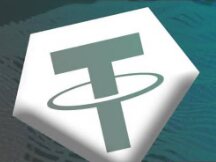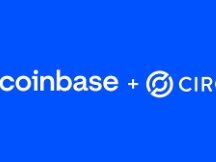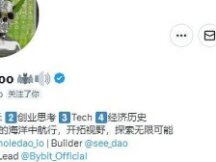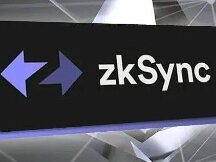Configurability VS Modularity Who is the C bit of blockchain?
Recently there have been some research papers published by crypto companies such as Messari, Delphi Digital, IOSG, and others on the term modular chain. What does time mean? Are they predicting the future or are they just hype?
In this sentence we try to answer these questions.
First of all, before we explain what a modular chain means, we need to understand what a monolithic (monolithic) chain is. Historically, Ethereum and the hottest Solana in 2021 both used this pattern and they do with most today. The most well-known blockchains, monolithic (monolithic) chains, are that they can have structures considered sacred chains.However, due to the collision of Ethereum keychains, some monolithic insufficiency has occurred. It suffers from a lack of scalability, non-compliance, and significant cost issues.
Solana uses the unique PoH to optimize the desktop to complete the transmission at the same time, thus obtaining business advantages not available on the big blockchain giants such as BSC. . of.
In blockchain environments such as Ethereum 1.0 and Solana, various blockchain modules include enterprise, security blockchain, data acquisition (DA), Defi interactions, and NFT interactions. All are completed on a single chain. Think of five people living in the same house. Very similar and very easy to communicate, but 10 more people in the same house would be this one. If there are too many people and one of them takes up too much space, the other person may feel uncomfortable, then the demand of these people is to expand their house or force them to move to another house.
This is an Ethereum module
Ethereum has a habit of extending oil blocking frequency limits, and this is the easiest way to measure, but at the expense of some decentralized products.
In fact, the solutions supposed to solve Ethereum's scaling problem are Layer 2 solutions represented by stacking and sharding to be adopted in Ethereum 2.0.
The idea of Layer 2 is to decouple layer processes from the Ethereum backbone, allow multiple applications to run on layer 2, and secure them through the trusted security layer of the Ethereum backbone.
This can effectively measure the output of the whole system, but the problem isMultiple Layer 2 solutions will emerge in the market, reducing the complexity of the process and decentralizing liquidity.
The division can achieve additional scalability using a new process called DA proof to achieve higher capacity. Using DA certification, each node only needs to remove a small part of the partition data chain, and know that a small part can be combined to rebuild each partition chain block. For example, Polkadot and Ze used DA proof in their design, which will also be implemented in ETH 2.0.
There is no doubt that sharding can improve the scalability of the whole system, but the difficulty of using sharding is undoubtedly very high and can take many years.
Recently, StarkWare also announced the concept of Layer 3, which adds subdivisions to several modules, which is also a very detailed development.

Multi-channel hub module design represented by Cosmos
Multi-chain hub refers to multiple blockchains that communicate with each other through a set of rules with the simplest structure, and in the case of Cosmos we have found 29 such as Terra, Osmosis, Cosmos Hub and Crypto.Org by IBC. . Blockchains interconnected by communication protocol These blockchains are generally optimized and customized for specific applications. Take the example of Osmosis with the highest IBC usage.

Osmosis is an optimized and optimized blockchain for Decentralized Exchange (DEX) using case, first chain, then DEX.
Compared to uniswap, Sushi, Curve and other DEX which rely on continuous chains, Osmosis has many advantages which are clearly visible in the user experience.
When users want to convert assets from other hub chains (Terra, Cosmos, etc.) to Osmosis, they simply click on the Osmosis inventory page without the knowledge of IBC.
Additionally, users don't have to worry about market preemption and high transaction costs, which is a common problem with blockchains like Ethereum.
And many of the following developments in Osmosis are expected to bring more users and TVL.

Of course, there are some drawbacks to this design as well, such as reduced connectivity, and these chains are responsible for their own security (this will have to wait until the Cosmos Hub uses the Interchain Stake mechanism to provide security).
It can be said that Terra and Osmosis opened our minds to the application of chains, and their market tells us that modular application chains have advantages.
Likewise, Algorand and Avalanche received the design of several hubs.
Modular design of Celestia's DA layer
Celestia is the new L1 model mentioned in several recent studies.
Similar to Ethereum 2.0's DA layer, Celestia also uses Existing Data Authentication (DA), but does not support smart contract validation and is designed to provide only data containing the standard layer and the data layer. security recommended for stacking.
And for a DA layer like Ethereum, when you hit or hit the limit, the market value shows up, while Celestia only supports tx rollup, so you don't have to worry about it.
Additionally, although Celestia's DA layer solution is easier to use than sharding, these new solutions may present cost capture issues and are not yet marketable. . Most importantly, Celestia's proven layer of security is equivalent to Ethereum.
What is the definition of modularity?
We now give an ambiguous definition of the modularity of public channels. It breaks the system down into several module components, each module is a blockchain and has many functions (such as execution layer, approval security layer, data usability layer, application chain DEX, Stabilitycoin Application Chain, NFT Application Chain, Derivative Application Chain) etc. ), these modules can be dismantled or reassembled.
While the benefits of modularity are many, different exchanges will present different challenges.

(Image source: Delphi digital report)
In a world of multiple chains of the future, will monoliths (monolithic architectures) aiming for composability gain many industries? Or will it win the modular chain focused on scalability and customization? While there is no clear answer yet, the market has signaled a shift towards modular chains.

Scan QR code with WeChat































